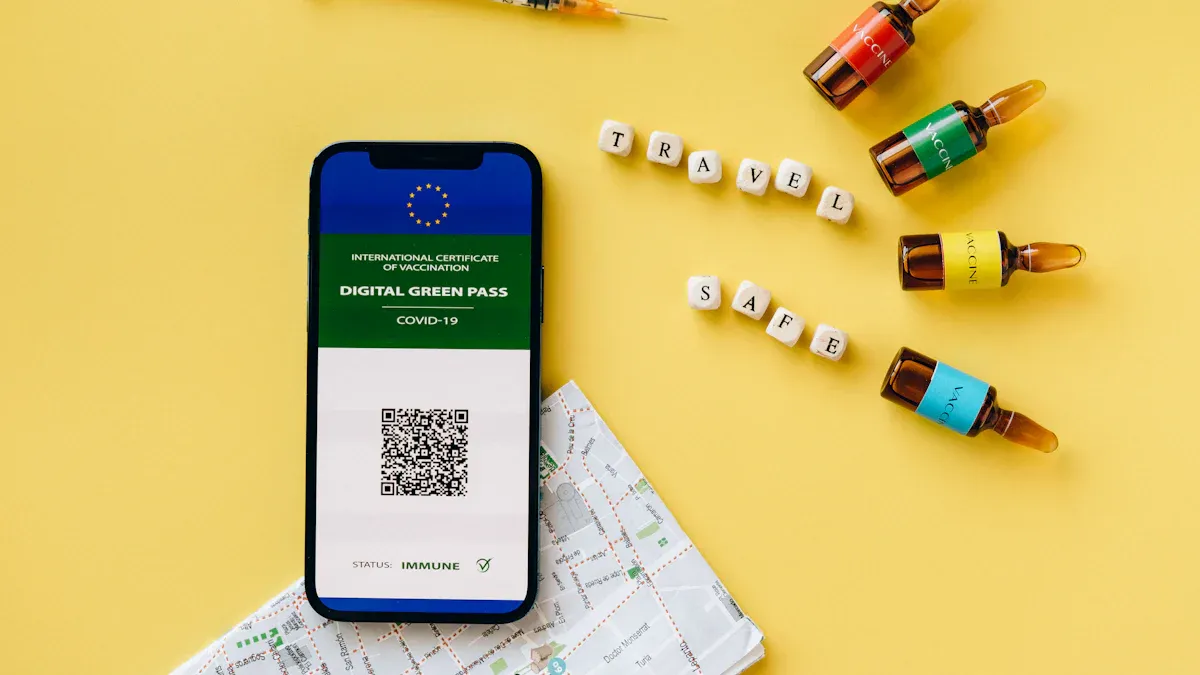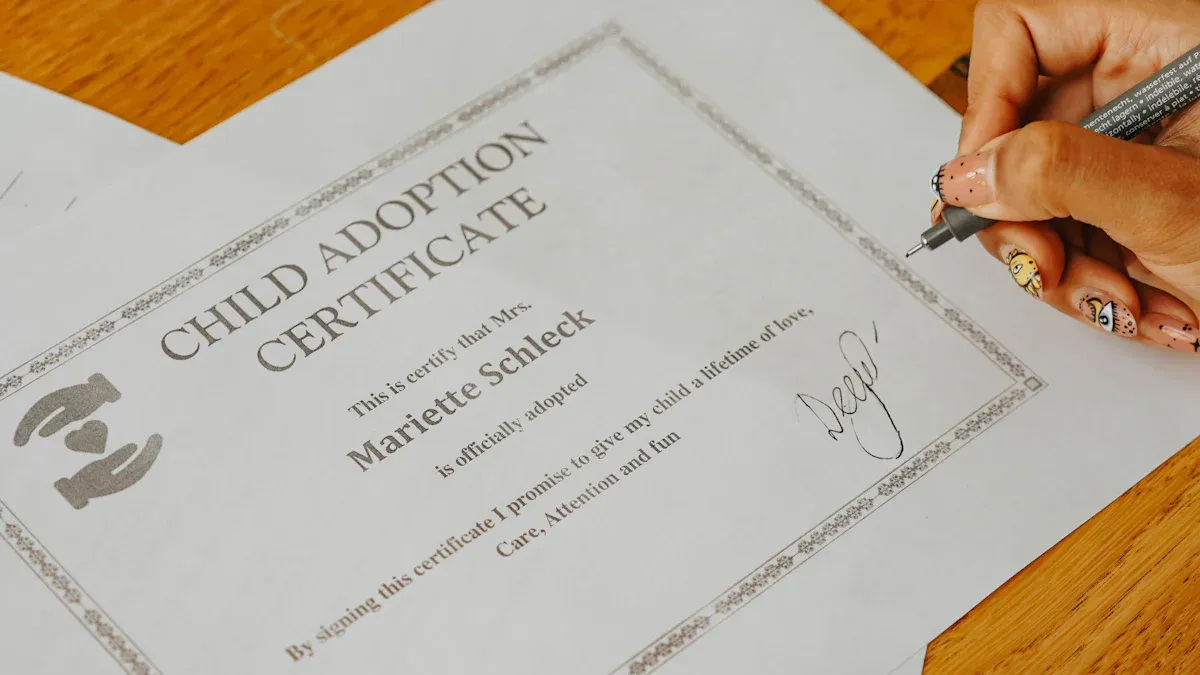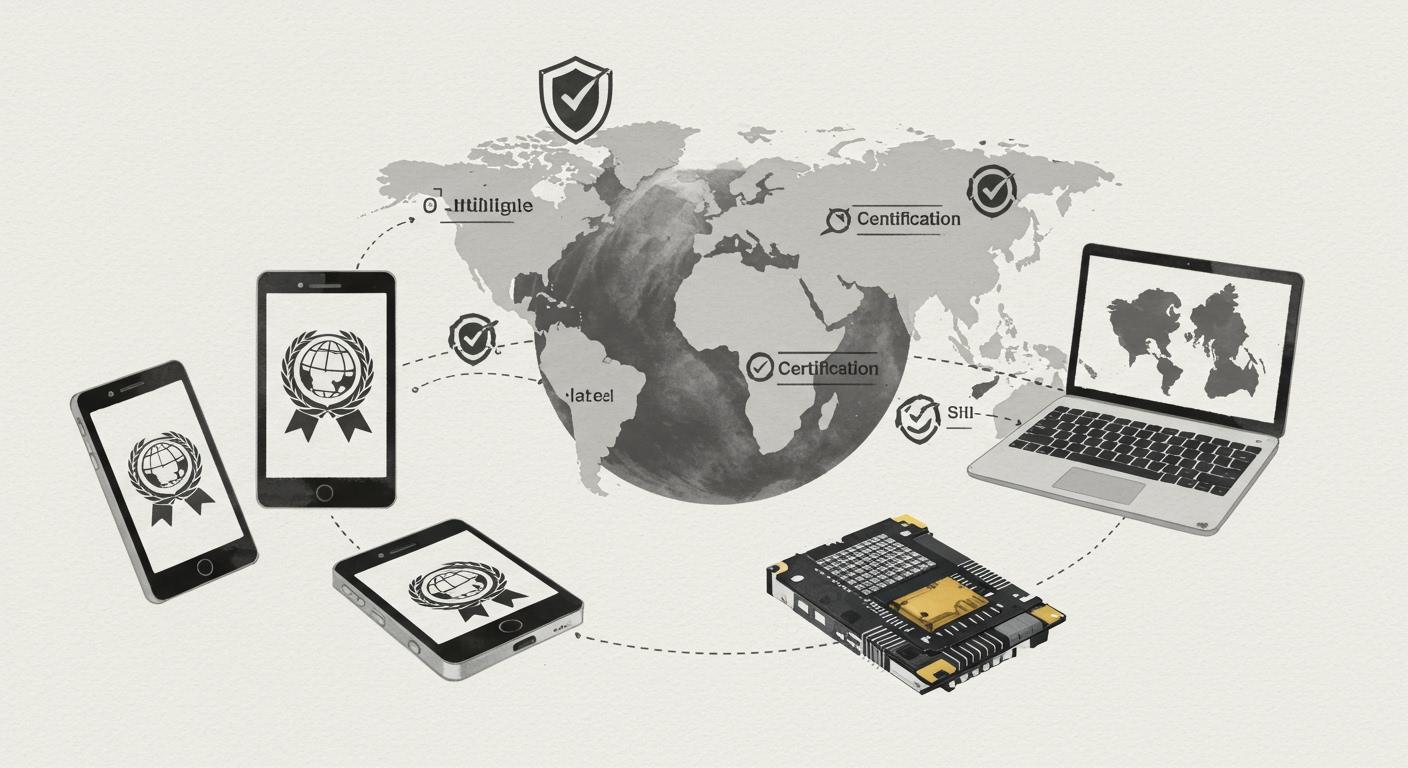Electronic product certification in the world
You rely on electronic product certification to ensure that devices meet strict safety and quality standards worldwide. This process matters for both you and manufacturers. If you make products, certification opens global markets and helps you meet legal rules. If you buy products, you trust certification to keep you safe. The global market for such certified products reached $97.28 billion in 2023 and should grow to $145.66 billion by 2029.
When you ignore certification, you risk market exclusion, costly fines, reputational harm, and supply chain disruptions. Proper compliance protects your business and builds trust.
Key Takeaways
- Electronic product certification ensures safety and quality, protecting both manufacturers and consumers.
- Certification opens global markets, allowing products to meet legal requirements and gain consumer trust.
- Different regions have unique certification standards, such as CE in Europe and FCC in the US; knowing these is crucial for market access.
- Staying updated on compliance requirements helps avoid costly mistakes and ensures ongoing market presence.
- Proactive compliance strategies, like early planning and automation, can save time and enhance product reliability.
Electronic product certification overview
Definition
You encounter electronic product certification when you want to sell or use electronic devices in different countries. This process means your product must meet specific safety, quality, and performance standards set by regulatory bodies. These standards protect users and ensure products work as intended.
You start by identifying the standards that apply to your product. You then make sure your manufacturing process follows these rules. If you ignore these steps, you risk facing penalties or losing access to important markets.
| Certification Body | Description |
|---|---|
| Major Certification Bodies | Establish standards ensuring safety, quality, and performance of electronic products. |
| Electrical Certification | Serves as a stamp of approval indicating compliance with high standards. |
| CE Certification | Covers a broader range of products with specific requirements laid out in CE Directives. |
You must consider various standards and regulations before placing your electronic products on the market. Clear definitions and a strong understanding of these standards help you avoid costly mistakes during manufacturing.
Purpose
You need certification for several important reasons:
- Safety and quality assurance: Certification ensures your products meet strict safety and quality standards.
- Market access: You can only sell your products in many countries if you meet local certification requirements.
- Consumer confidence: Shoppers trust brands that show a commitment to safety and quality.
- Risk mitigation: Certification reduces the chance of product failures or recalls, protecting both you and your customers.
You see that CE certification, for example, covers a wide range of electronic products. Each product type has its own set of rules, described in CE Directives. These directives guide you through the process and help you understand what is required for compliance.
Who needs it
You need electronic product certification if you:
- Design or manufacture electronic devices for sale.
- Import or distribute electronic products in different countries.
- Sell products under your own brand, even if you do not make them yourself.
If you skip certification, you risk fines, product recalls, or bans from selling in key markets. You also lose the trust of your customers and business partners.
You benefit from certification whether you are a large manufacturer or a small start-up. Meeting these requirements helps you grow your business and protect your reputation.
Global device certification standards

When you want to sell electronic products worldwide, you must understand the main global device certification standards. These standards help you prove that your products are safe, reliable, and ready for international markets. Each region and product type may require different certifications, but some schemes are recognised almost everywhere.
CE, FCC, IC, CCC
You often see CE, FCC, IC, and CCC marks on electronic devices. These marks show that your product meets the essential requirements for safety, electromagnetic compatibility, and sometimes environmental protection.
- CE Marking (Europe): You need this mark to sell most electronic products in the European Economic Area. It shows your product meets EU safety, health, and environmental standards.
- FCC Certification (United States): If you want to sell devices that emit radio frequency energy in the US, you must get FCC approval. This ensures your product does not interfere with other electronic devices.
- IC Certification (Canada): Similar to the FCC, Canada’s IC certification checks that your device follows Canadian radio and telecommunications rules.
- CCC Mark (China Compulsory Certification): You need this mark to enter the Chinese market. It covers safety and quality for many electronic products.
You should always check which of these certifications your target market requires. Missing even one can block your product from reaching customers.
UL, CB Scheme, Recycled Content
Some certifications focus on product safety or environmental impact. You may need more than one, depending on your product and where you plan to sell it.
-
UL Certification: Underwriters Laboratories (UL) tests products for safety, especially in North America. Many retailers and buyers look for the UL mark as proof of safety.
-
CB Scheme: The IECEE CB Scheme lets you test your product once and use the results in over 130 countries. This scheme covers IT equipment, lighting, home appliances, and more. You save time and money by avoiding repeated testing.
Certification Program Countries Recognised Product Categories Covered IECEE CB Scheme Over 130 IT and office equipment, lighting systems, domestic consumer electronics, appliances -
Recycled Content Certification: Some markets now require proof that your product uses recycled materials. This certification helps you show your commitment to sustainability and meet new environmental laws.
You gain a competitive edge when you choose certifications that match your customers’ values, such as recycled content.
Major certification bodies
You need to work with trusted organisations to get your global device certification. These bodies test your products, review your documents, and issue the certificates you need.
| Organization | Role in Certification |
|---|---|
| CB Scheme | International programme for exchange and acceptance of product safety test results |
| Nemko | Major certification body with high recognition in the CB Scheme |
| Intertek | Guides manufacturers through the CB Scheme process with multiple NCBs worldwide |
You may also hear about other leading certification bodies and service providers:
- Bureau Veritas: Offers technical and regulatory support, including consultancy, certification, testing, and validation. You benefit from their expertise in new fields like the hydrogen economy.
- DEKRA: Focuses on safety and environmental testing. You often see their mark in vehicle and electronic product inspections.
- Intertek: Provides a wide range of testing, inspection, and certification (TIC) services. You can rely on their global network and focus on innovation and sustainability.
- TÜV: Ensures your products meet strict safety and quality standards. Many industries trust TÜV for their deep technical knowledge.
- VDE: Specialises in electrical and electronic product testing. You may need their mark for certain European markets.
- Applus+ and VECTOR BLUE HUB: These service providers help you navigate complex certification processes and reach new markets faster.
The global TIC market keeps growing as more countries demand higher safety and quality standards. You can stay ahead by choosing the right partners for your electronic product certification journey.
Regional requirements
You face different compliance requirements when you enter new markets. Each region sets its own rules for electronic product certification. Understanding these differences helps you avoid delays and costly mistakes.
| Region | Certification Requirements |
|---|---|
| North America | UL certification preferred; CSA accepted; NOM certification in Mexico |
| Europe | CE marking required; IECEx for hazardous locations |
| Asia-Pacific | CCC certification in China; JIS standards and PSE in Japan; RCM in Australia |
Europe
You must meet strict compliance requirements in Europe. The CE mark is essential for most products. You need to follow several directives:
| Directive | Description |
|---|---|
| Low Voltage (LVD) Directive 2014/35/EU | Applies to products with a voltage capacity of 50-1000 volts for AC and 75-1500 volts for DC. |
| Radio Equipment Directive (RED) 2014/53/EU | Applies to electronic products that emit and/or receive radio waves. |
| Electromagnetic Compatibility (EMC) Directive 2014/30/EU | Applies to all electronic products capable of generating or being affected by electromagnetic disturbances. |
| RoHS - 2011/65/EU | Applies to most electrical and electronic products, with certain exemptions. |
You also see the ENEC mark for compliance with European Norm standards. These country-specific standards ensure your products meet safety, health, and environmental rules.
North America
You need to secure UL certification for most products in the United States. Canada requires IC certification, and Mexico uses NOM certification. The FCC mark is mandatory for devices that emit radio frequencies. You must prepare detailed documentation, including product descriptions, test reports, and compliance statements.
Mandatory certifications like FCC, IC, and NOM are crucial for legal sales. They help you avoid launch delays and expensive redesigns.
You may also face challenges such as complex documentation and the need for employee training to meet compliance requirements.
Asia-Pacific
You encounter a wide range of compliance requirements in Asia-Pacific. China enforces the CCC mark. Japan uses JIS standards and PSE certification. Australia requires the RCM mark. Developed countries like Japan and South Korea demand high-quality testing. Emerging markets such as India and China focus on rapid industrial growth, which increases demand for certification services.
Regulatory bodies in this region often require local testing and may not accept foreign test data. You must adapt to each country’s unique compliance requirements.
Other markets
You find even more variety in compliance requirements outside the main regions. For example:
| Region | Certification Authority | Key Points |
|---|---|---|
| Middle East | Saudi Standards, Metrology, and Quality Organization (SASO) | Local certification requirements must be met for products entering Saudi Arabia. |
| Africa | Various local bodies | Many nations accept international standards but require local testing through authorised entities. |
| Latin America | Local standards in countries like Brazil and Mexico | Products must adhere to specific local certification requirements. |
You must submit paperwork to local bodies, and some countries require local testing. National rules for labelling and manuals can force you to change your product. You need to manage multiple certification cycles and adapt to evolving compliance requirements.
Certification process

You must follow a clear process to achieve electronic product certification. Each step ensures your product meets safety and quality standards before reaching the market. The process involves documentation, testing, and final approval.
| Step Number | Step Description |
|---|---|
| 1 | Initial Assessment and Documentation |
| 2 | Product Testing and Evaluation |
| 3 | Certification Decision |
| 4 | Continuous Monitoring and Compliance |
| 5 | Market Access and Labelling |
Documentation
You start by gathering all required documents. These papers prove your product’s design, safety, and compliance with regulations. Typical documents include:
- Letter of Agency for application submission
- Covered List Attestation for equipment certification
- US Representative Attestation for service of process
- User’s Manual with installation and operating instructions
- Test Report showing compliance with technical requirements
You may also need certificates that show your product’s marketing status or facility compliance. Some countries require you to submit applications through specific online systems.
Tip: Keep your documentation organised and up to date. Missing or incorrect documents can delay your certification.
Testing
You must test your product to show it meets technical standards. Testing often includes:
- EMC Testing: Measures electromagnetic fields to ensure your product does not cause interference.
- RF Testing: Checks that your device does not disrupt radio services in certain frequency bands.
You may need to send your product to an accredited laboratory. The results must match the standards set by the relevant authorities.
Approval
After testing, you submit your documents and test results for review. The approval process can take 8 to 12 weeks for most devices. Some modern systems allow you to speed up approval to as little as 1 to 2 weeks.
Once approved, you receive your certificate and can label your product for sale. You must continue to monitor your product for ongoing compliance.
Compliance challenges
Common issues
You may face several challenges when you try to meet electronic product certification standards. Many manufacturers struggle to keep up with changing regulations. You often need to track updates from different countries and regions. This can feel overwhelming if you do not have dedicated resources. You might also find it hard to understand and apply technical documentation, especially when formats vary. Language barriers and slow responses from suppliers can slow your progress. You must also manage complex rules that change by country and product type. Some regions require you to follow strict safety and environmental laws, such as RoHS and REACH. In large markets, you may need to handle state or regional rules as well.
Tip: Stay alert to new regulations and changes in existing laws. Early awareness helps you avoid costly mistakes.
Solutions
You can overcome these challenges by using a few key strategies:
- Start thinking about compliance early in your product design process.
- Set up review steps to check that your designs meet all rules before moving forward.
- Use automation to make testing and data collection faster and more reliable.
- Gather all required documents and do a final check before you launch your product.
- Monitor customer feedback and field data after launch to spot problems quickly.
You can also build a strong culture of governance in your company. Quality management systems help you keep track of rules and make better decisions. Automation tools let you monitor your products in real time and react to issues as they arise.
Ongoing compliance
You must keep up with ongoing requirements to maintain your product’s place in the market. Different regions enforce strict rules on hazardous substances, waste, and chemicals. The table below shows some of the main regulations you need to watch:
| Regulation | Description |
|---|---|
| RoHS | Controls hazardous substances in electronics across the EU, China, and other regions. |
| WEEE | Governs how you dispose of electronic equipment in Europe. |
| REACH | Covers the use and safety of chemicals in the EU. |
| TSCA | Regulates toxic substances in the United States. |
| PFAS Restrictions | Targets the use of certain harmful chemicals in new products. |
Note: Regular audits and updates help you stay compliant and avoid penalties.
You gain many advantages when you understand and meet global certification requirements. Certified products reach more markets and build trust with customers. The table below shows the long-term benefits for manufacturers:
| Benefit | Description |
|---|---|
| Regulatory Compliance | You meet legal standards and avoid penalties. |
| Enhanced Consumer Trust | Certification increases customer confidence in your products. |
| Expanded Market Access | You can sell in more countries and regions. |
| Product Differentiation | Certified products stand out from competitors. |
| Reduced Liability and Risk | You lower the chance of legal or financial problems. |
To start your certification journey:
- Consult experts for guidance.
- Stay updated on changing regulations.
- Build compliance into your design process.
Proactive compliance saves you time and money. You protect your business and reputation by acting early.
FAQ
What is the difference between CE and FCC certification?
CE certification applies to products sold in Europe. FCC certification is for devices in the United States. You need CE for European markets and FCC for American markets. Each mark shows your product meets local safety and technical standards.
How long does the certification process usually take?
You can expect the process to take 8 to 12 weeks for most products. Some fast-track services may reduce this to 1 or 2 weeks. Delays often happen if you miss documents or need extra testing.
Do you need to renew your product certification?
Yes, you must keep your certification up to date. Some certificates require renewal every few years. You should also update your certification if you change your product’s design or components.
Can you use one certification for all countries?
No, you cannot use one certificate worldwide. Each country or region has its own rules. You must check the requirements for every market you want to enter.
What happens if you sell uncertified products?
You risk fines, product recalls, and bans from selling in key markets. Customers may lose trust in your brand. Always certify your products before selling them.
-

 May.2025.11.24Ternary Lithium Battery vs Lithium-ion: Complete Comparison Guide (2025 Edition)Learn More
May.2025.11.24Ternary Lithium Battery vs Lithium-ion: Complete Comparison Guide (2025 Edition)Learn More -

 May.2025.11.214S2P 18650 14.8V Battery: Complete Technical Guide, Specs, Applications & SafetyLearn More
May.2025.11.214S2P 18650 14.8V Battery: Complete Technical Guide, Specs, Applications & SafetyLearn More -

 May.2025.11.18PCM vs BMS in Lithium Batteries: What’s the Difference and Which One Do You Need?Learn More
May.2025.11.18PCM vs BMS in Lithium Batteries: What’s the Difference and Which One Do You Need?Learn More -

 May.2025.11.17Custom Li-ion Battery Design for Medical Devices (2025 Comprehensive Guide)Learn More
May.2025.11.17Custom Li-ion Battery Design for Medical Devices (2025 Comprehensive Guide)Learn More -

 May.2025.11.17The Future of Lithium-Ion Batteries: Innovation, Sustainability, and Global Market TrendsLearn More
May.2025.11.17The Future of Lithium-Ion Batteries: Innovation, Sustainability, and Global Market TrendsLearn More
















